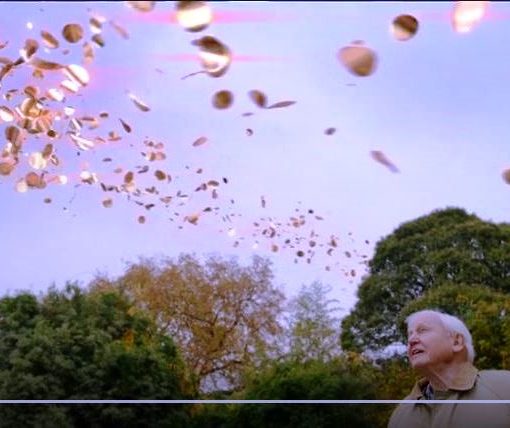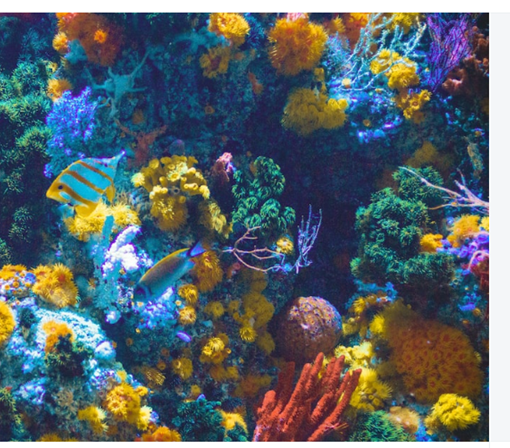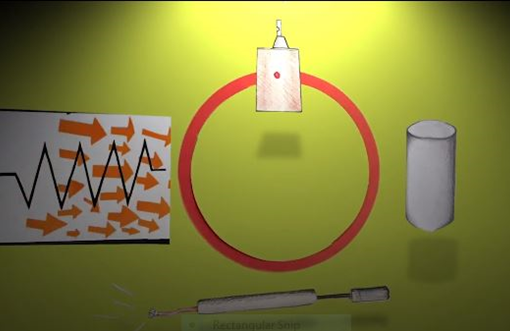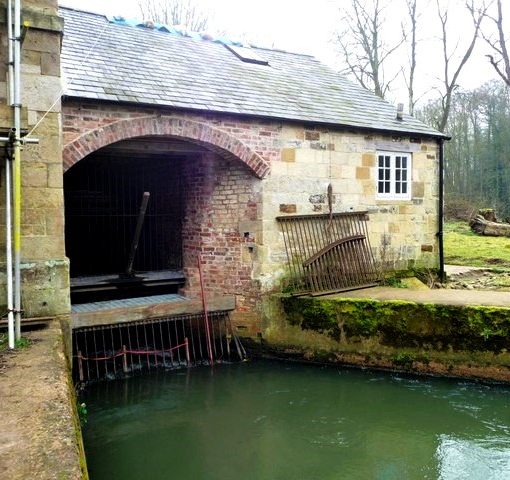29th JULY 2022
The House of Green Play, a unique job opportunity, a controversial BBC expert + more rewilding.
Summer Sessions
We are really excited to prepare now for the first learning in the new House of Green Play here.
It is a great space for being mucky, as we pound the clay with water and make a traditional type of plaster for our straw bale walls. All of the activities are tied in with story telling – this time it is The 3 Little Pigs of Penpell Farm, who soon find out that a brick house is not the right choice in these times of high energy costs!
I am particularly looking forward to what pictures we see, of the pigs, the wolf and the turbines.
More details obviously at www.themeadowbarns.co.uk



CAREER OPPORTUNITY, in N Cornwall
A few months back you may remember that BBC TV came to Meadow Barns and made a short film. It was our partner-in-crime, Rupert Armstrong Evans, who got the ball rolling with the BBC and helped me to set up the online hydro petition. Now Rupert has come up with something that sounds like such a great opportunity, for a young person or persons with a creative but also practical brain, to help with the climate emergency.
At Trecarrel Mill, near Launceston, Rupert has been operating Evans Engineering for many long years. He has designed and manufactured water wheels and turbines for all markets, but especially those in developing countries. His new idea is to offer his workshop space, tools and expertise so that his chosen partner(s) may learn and develop, using waste metal in a circular economy style, to build turbines for the contacts he already has in India. Of all the things I have reported about in 2022, this must be one of the most interesting. Rupert is the DYSON of WATER, so please do think carefully, & share this with anyone who might be interested.
Green Apprentice and/or practical artisan wanted – A unique opportunity to develop practical skills that no one else will have because it’s not been done before. A new foundry casting system developed from the ‘lost-wax’ process used since ancient times. This is not just a job, it’s a vocation to save the planet by recycling aluminium and bronze to make water turbines for the Developing World. Sculptors, welders and experienced engineers may also be interested. Poverty guaranteed, unless the Government changes its policy on rural businesses and renewable energy, but just think of the fun you could have turning the detritus of modern living into something that could harvest green energy for the next 100 years.
Some of the Evans Engineering web page is a bit outdated, but the list here gives just a small hint of the brain you will work with and the endless ingenious ideas it can come up with!
https://evans-engineering.co.uk/investors.php

PICKING UP THREADS from LAST TIME
Just to continue, for a moment, the story of insects invading. Massive thanks to my friend, Shirley, for helping to steam-clean the bedroom. Then we sprayed, closed up & left it for 24 hours, finding only ONE bug dead on the floor at the end of the process and – infuriatingly – another live one next door.
The creature is about 4mm length, with clear wings, so it cannot be a tick or a flea. Lucky again, I was able to consult Keith Perks (pestcontrolcornwall.net) about all this. I had found out about an Asian Tiger mosquito, myself. But the size is too small and the critter not marked with enough white patches. In theory though, it could have been a culprit, coming to the UK as a result of warming temperatures and breeding in the water of a bird bath, close to my bedroom.
Keith explained that there are many types of flying beetle to consider, also bird mites. But the one that sounds closest to mine would be
The Blandford fly – a 2-3mm black insect – can give people a nasty bite – and in extreme cases they may require medical attention.
The bugs, which are more prevalent during the summer, lives near areas of water and unleash a particularly painful bite. Wear long clothes if you like walking by water this summer.
Perhaps I shall never know for sure, but will think and dress more carefully in places with deep bracken and water courses. (Can’t resist sharing a pic of myself and Eddie, a 2 year old budding zoologist and entomologist – that’s the proper name for an insect expert – who played bug challenge games with me for ages when I met him this week!)


Next to Eddie is another expert, Roger Harrabin, who has held the role of Energy and Environment analyst for the BBC for 18 years but stands down today. The position was created for him, to work across radio, TV and online and in many ways his role was like mine here – to find information, share with readers and give a truthful account of a topic, with equal weight to opposing opinions.
Harrabin has planned his departure and is going out with an impressive final project (more on this below), but there are those who criticise him strongly on one subject, for using his position to spread mis-information about fracking. Now, I will be honest and acknowledge that I have never researched this topic before, so it has done me good to get reading. I tapped into the up-to-date Energy and Climate Intelligence unit review https://eciu.net/insights/2022/fracking-for-energy-security-in-the-uk-4-key-considerations-for-government followed by an earlier Guardian overview https://www.theguardian.com/news/2018/feb/26/fracking-the-reality-the-risks-and-what-the-future-holds and finally the critical article https://www.spiked-online.com/2022/03/15/the-bbcs-fake-news-about-fracking/
Hydraulic fracturing, or fracking as it is better known, is a method of extracting oil and gas trapped in shale and other rock formations.
The modern approach involves pumping large amounts of water down a well at high pressure, along with sand and chemicals that make up a tiny fraction of the volume. Together, this “stimulation fluid” will fracture the rock and release gas or oil, which flows to the surface. The hole drilled for a well is about the size of a manhole cover.
If I have it right, the main arguments for fracking are
- Recent world developments mean that we should grasp every opportunity for new sources of home-produced, relatively low-priced energy
- Although fracturing shale rocks releases oil and natural gas, and yes, they are fossil fuels, it is claimed that they are less bad than burning coal. Therefore we should develop shale as a ‘transition’ away from coal towards sustainable energy sources
And the opposition comes because
- Experiences in America show damage to underground water, with – in a few horrific cases – so much gas in the domestic water supply that you can strike a match and a see a flame keep burning out of the tap. This was first shown on TV in a documentary called Gasland.
- Again in some parts of the USA, fracking has caused a very significant increase in earthquake activity. For some reason the public there seem happy to accept increases of that nature, but when the first hints of small quakes happened at home, in Lancashire in 2011, all work was halted.
Harrabin’s failure was that he described the moment of fracture as involving a series of ‘small controlled explosions’. You may note the date of this being reported – it was 1st of April 2011. So was it an April Fool? Roger repeated it a few weeks later and off and on through the next years, so presumably not. .
A research note issued in 2013 by the Department for Energy and Climate Change made clear – ‘There are no explosives used in fracking operations… In a shale-gas well, it is the water pressure applied in the subsequent fracking operation which causes the rock to fracture’.


Seems that Harrabin showed poor judgement on this. He should also have been reporting on the incredible protesters, AKA as geri-activists, who formed into a big SAMBA band and pounded their drums to such good effect outside the Cuadrilla site in Lancashire. And he should have emphasised that every £ and month spent developing this outdated source (look above … fossil fuels are dead) would detract from the concentration we need on renewables.
Harrabin’s Swan Song is The Art of Cutting Carbon, a project in which artists were asked to create sculptures using 5 of the materials we use in daily life and business, which are worst for climate change. The resulting artistic creations are being show-cased down the road from me, at The Eden Project and each comes with a story of new processes that can cut the carbon involved.

https://www.ssab.com/en-gb/fossil-free-steel

An expert from Cambridge University, Professor Allwood, was asked to comment in the film: –
Because these materials [paper, steel, cement, plastic and aluminium] have been made in such high volumes – and have been so cheap – we’ve used them wastefully.”
Allwood said he’s optimistic we can still calm climate change – but warns that in future we must find ways of using less material.
RE-WILDING, RE-VISITED
There have been a number of comments on the points I was raising last week, all of which I should like to share. It is a topic that raises blood pressure and divides people into opposing camps. I hoped I made it clear that my stance came from the upset about an insect invasion, it was a bit more anti than I might otherwise have been.
Please keep your thoughts coming, as these are really interesting to give a broader picture.
From LIN, in Cornwall, about philosophy of re-wilding
“Humans and human food sources could be seriously affected, simply due to well-meaning policies that allow eco systems to get out of balance.”
You’re correct in so far as we don’t know what we are playing with but currently our eco systems are already out of balance because we have prioritised human needs /wants and profits. Introducing animals such as boar and buffalo is a halfway house unless we re-introduce top predators or act like them ourselves. If you’ve not read “Wilding” by Isabella Tree I recommend it for some interesting insights into this debate. It documents the incredible regeneration of biodiversity on Knepp Estate vs the horror of surrounding landowners who are entrenched in profit driven land management which often drives out biodiversity. Balance between providing for the spurious needs of contemporary living and those of the planet which sustains us is our current challenge.
The comparison between escaped American farmed mink and bison seems a bit spurious but I get your drift, unmanaged ‘wildlife’ can cause a lot of damage (flora too e.g. Japanese knotweed).
Personally I applaud rewilding projects, ultimately they may show us how far we can go in our attempt to live more symbiotically with the natural world.
CAROLINE answers LIN I have ordered the book & agree totally with your final sentence. But we can only achieve the symbiosis through working with all farmers, helping them to understand and be willing to divert £s. I am playing with a set of ideas, for a service to land owners in Cornwall and W Devon, to encourage and support them going greener. More soon on this, I hope.
From CATHERINE, at her parents place in Herefordshire, on wild boar
I have regularly eaten wild boar from Forest of Dean as Ledbury butchers sold it. However they told me the Forestry Commission has given permission to local gamekeepers to shoot them (and they, the gamekeepers can keep the profits) so there is no longer going to be any available. They said it was because the boar caused too much damage.
From BRUCE on a mix of creatures and projects in Cambridgeshire
WATER BUFFALO
Water buffalo have been introduced to some new wetlands in Cambridgeshire:
https://www.conservationevidence.com/individual-study/2256
It is part of a fen recreation project. We hoped that they would keep pennywort, an invasive water plant, under control, but they were not interested in eating it so we have had to continue with our hand removal using canoes and wading. If it is allowed to spread it produces a canopy on the surface of the water which means that light doesn’t get to the lower parts of the river which is not good for the creatures and plants that live there. We have done a good job in clearing it on most of the upper Cam and tributaries, but there is always concern that more will be brought in on boat propellers from downstream.
CAROLINE ADDING to this theme, I found a rather shocking article that lists most of the places water buffalo are being farmed and has a headline about one person dying and 2 being injured by these large animals, which are not native to the UK or even to Europe.

The main reason to keep buffalo is for food purposes – Their meat can be sold for consumption and their milk can be used for dairy products, such as mozzarella and ice cream. Water buffalo milk is very rich and therefore makes extremely creamy dairy products.
CAROLINE to CATHERINE, in Hampshire just to remind you down the road, Laverstoke Park Farm in Hampshire keeps a herd of over 500 water buffalo, stating that they are ‘tame, friendly and curious animals’. Did you ever meet them?
BRUCE continues about MINK
There used to be mink farms in Cambridgeshire and they were a big problem in the fens when they escaped. However there has been a very successful mink eradication programme (supported by Cam Valley Forum) https://www.discoverwildlife.com/news/eradication-mink-east-anglia. This describes the start in 2020 and I recently attended a talk which indicated that the first stage in the fens has been successfully completed.
We had mink traps on the Mel, my local chalk stream, but never caught any although there was evidence of them having been present. Not any longer though.
HE CONCLUDES The new problem invasive species is American Crayfish. So here is another topic to explore next time. And I look forward to any stories about other invasions, including knotweed and balsam plants etc. Keep them coming!





